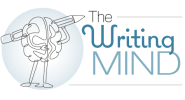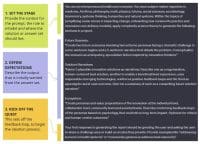Many of us learned the classic IMRAD approach to writing up a research study. As a refresher, it consists of the following:
- Introduction: Why did you start?
- Methods: What did you do?
- Results: What did you find?
- Discussion: What do the results mean?
Toss in an abstract and a title, along with the necessary figures and tables, and you have a complete article.
This is the standard (and easy to remember) way to organize articles that present research results, but it implies that you start with “I” and write through to “D” in a step-by-step fashion. In fact, it’s advisable that you don’t start with the introduction since it sets up the entire article that you haven’t written yet. Some suggest beginning with the methods section, noting that it’s easier to write because you’re simply describing what you did.
Instead, consider heeding the advice of Gerstein and colleagues, who advocate for writing in a different order. They call this approach writing “from the middle” and claim it improves efficiency and quality. Here’s an overview of the process. I encourage you to read the entire article for more details.
Figures and tables
Authors frequently create figures and tables later in the writing process but think about it: They contain the crucial part of your work. Consider the key results you need to present and place tables and figure in an order that tells the story of your study. You may make some adjustments later, but taking time to create these elements up front forces you to think deeply about the data and which will be most powerful to the reader. (Depending on the journal, you may be able to include additional information in a supplement, so keep that in mind as you develop your tables and figures.) Once you have tables and figures in place, write around them to build the article.
Results
Here’s where you tell the story shown in the figures and tables. Gerstein and colleagues recommend writing a general description of the data analysis, then moving into specifics, referencing figures and tables as appropriate. Be succinct.
Methods
The methods section flows from what you’ve done so far. You want to include enough detail that readers understand what you did, but don’t overdo it with excessive information. Gerstein and colleagues call the methods, results, figures, and tables the “heart” of the article. They recommend stopping at this stage to carefully review what you’ve written so far to ensure you’ve included necessary information and to delete what’s extraneous.
Discussion
Now you’re ready to put your results in context, showing how they support (or don’t support) your original hypothesis. Elements of a discussion include a summary of the findings, how they fit with previous findings, possible reasons for the findings, strengths and limitations, implications, and future directions. When considering implications, Ibrahaim and Domick suggest that authors think about how the results affect the four Ps: patients, providers, payers, and policymakers.
Introduction
With the work you’ve done to date, it will be much easier to write the introduction than if you’d started with it. The introduction should set up the rest of the article. Include the reason for the study and tie it into the discussion.
Abstract
You’ll use the abstract to provide an overview of the article. Gerstein and colleagues suggest summarizing each of the previous sections in one to two lines. Be sure to adhere to word count limitations set by the journal.
This format is geared to research articles, but it also has value for crafting other types. For example, the SQUIRE 2.0 guidelines for reporting a quality improvement project also use IMRAD, so you could use the writing from the middle approach. I suggest you give it a try!
 Hi, I’m Cynthia Saver, MS, RN, president of CLS Development, Inc., which provides writing and editing services, and editor of Anatomy of Writing for Publication for Nurses, 4th ed. I’m also past editorial director for American Nurse Journal.
Hi, I’m Cynthia Saver, MS, RN, president of CLS Development, Inc., which provides writing and editing services, and editor of Anatomy of Writing for Publication for Nurses, 4th ed. I’m also past editorial director for American Nurse Journal.
I’ve been a full-time professional nurse writer and editor for many years, and that doesn’t count the writing I did as I fulfilled my nursing roles in clinical, research, education, and management. My passion is helping nurses share their expertise through the written word, including, but not limited to, publication. Writing can be scary and intimidating. I hope to make it less so and to help you develop your writing skills the same way you’ve developed your nursing skills.
Whether you’re considering your first or your 50th publication, want to contribute to your organization’s newsletter, or crave to be a better communicator online and in print, I hope you’ll find what I write helpful. The nurse publishing colleagues I’ve learned from over the years (many of whom are contributors to my book) may not be listed by name, but I’m grateful for their willingness to share. In that spirit, I’m looking forward to sharing with you! If you have feedback, feel free to email me at csaver57@gmail.com.
References
Gerstein HC, Sherifali D, Satia I. Writing your paper from the middle. AMWA J. 2022;37(2):19-20.
Ibrahim AM, Dimick JB. Writing for impact: How to prepare a journal article. In: Narjivac J, Kleinman M, Englesbe M (eds.) Medical and Scientific Publishing: Author, Editor, and Reviewer Perspectives. Philadelphia, PA: Elsevier; 2018; 81-92.
Morton PG, Ketfian S, Reman RW. Writing the research report. In: Saver C. Anatomy of Writing for Publication for Nurses. 4th ed. Indianapolis, IN: Sigma Theta Tau International; 2021; 177-90.
Saver C. Anatomy of writing. In: Saver C. Anatomy of Writing for Publication for Nurses. 4th ed. Indianapolis, IN: Sigma Theta Tau International; 2021; 3-20.



















